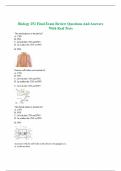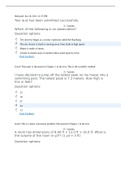Samenvatting
Summary Sensation and Perception - Sensation and Perception (P_BSENPER)
- Instelling
- Vrije Universiteit Amsterdam (VU)
This is a document complete with information from the lectures on Sensation and Perception, the slides the teacher used in class, and a summary of the book together with explanatory pictures. Studying from this document is sufficient to pass the class!
[Meer zien]














